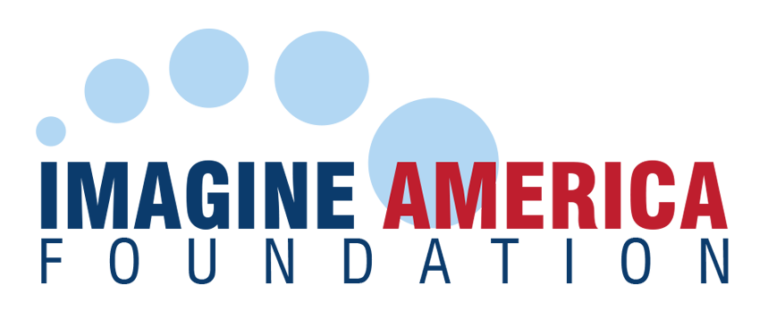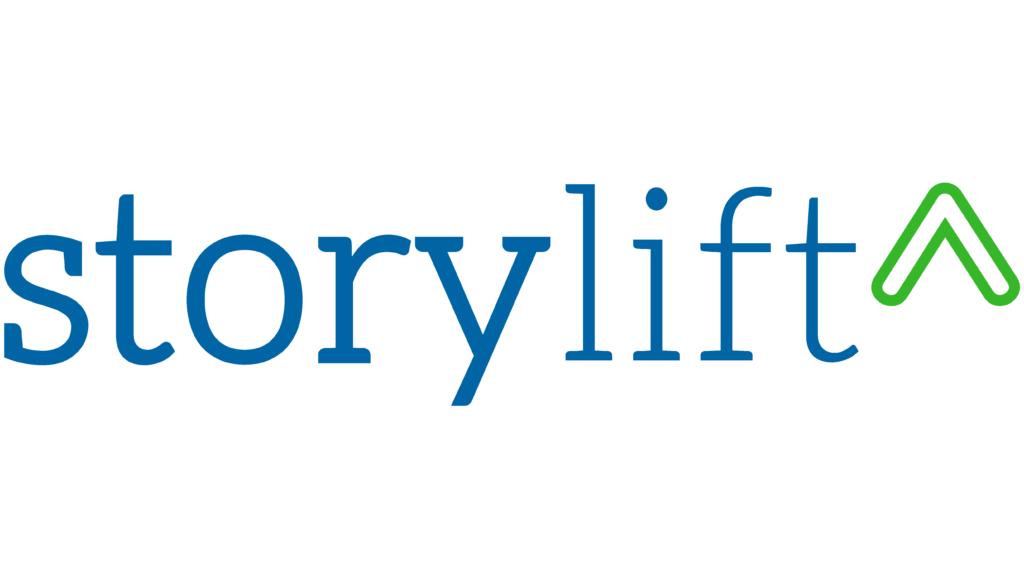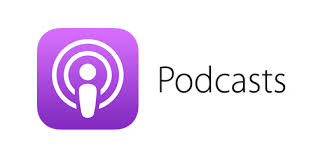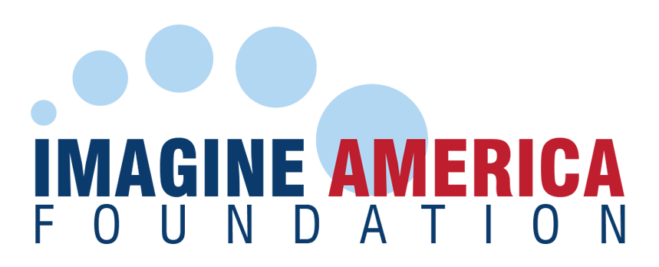Practical Nursing With Porter and Chester Institute: SEASON 3, EPISODE 22

A Word From Our Sponsor, Storylift:
If your school is looking to boost enrollments, Storylift is your solution. Storylift goes beyond simply targeting demographics and behaviors by harnessing the power of social & digital media to reach potential students with more precision.
With Storylift, you get many unique benefits, but their targeting capabilities are what truly differentiate them from others. Unlike traditional PPL methods, Storylift generates leads exclusively for your school. Their specialized targeting capabilities allow them to reach a new and relatively untouched pool of candidates which helps to avoid marketing overlap.
By engaging with audiences based on how they think and feel, Storylift delivers quality leads at competitive rates. To learn more, visit storylift.com.
Practical Nusring FROM PORTER & CHESTER INSTITUTE AND YTI CAREER INSTITUTE – SEASON 3, EPISODE 22
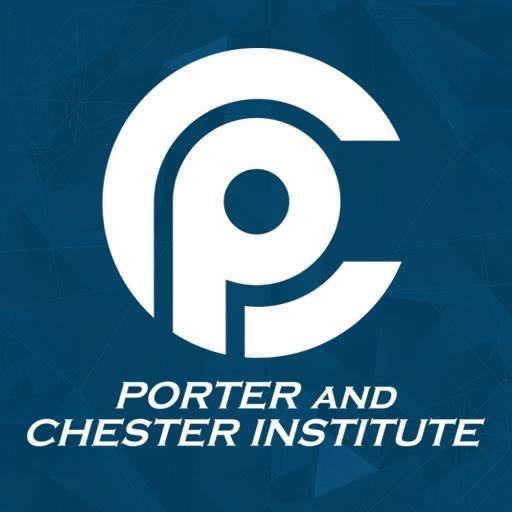
Porter & Chester Institute
Porter and Chester Institute has been training the American workforce since 1946. Schedule a virtual tour!

Jim bologa
Our guest on this episode of Imagine America Radio is Jim Bologa, president and CEO of Porter and Chester Institute and YTI Career Institute.
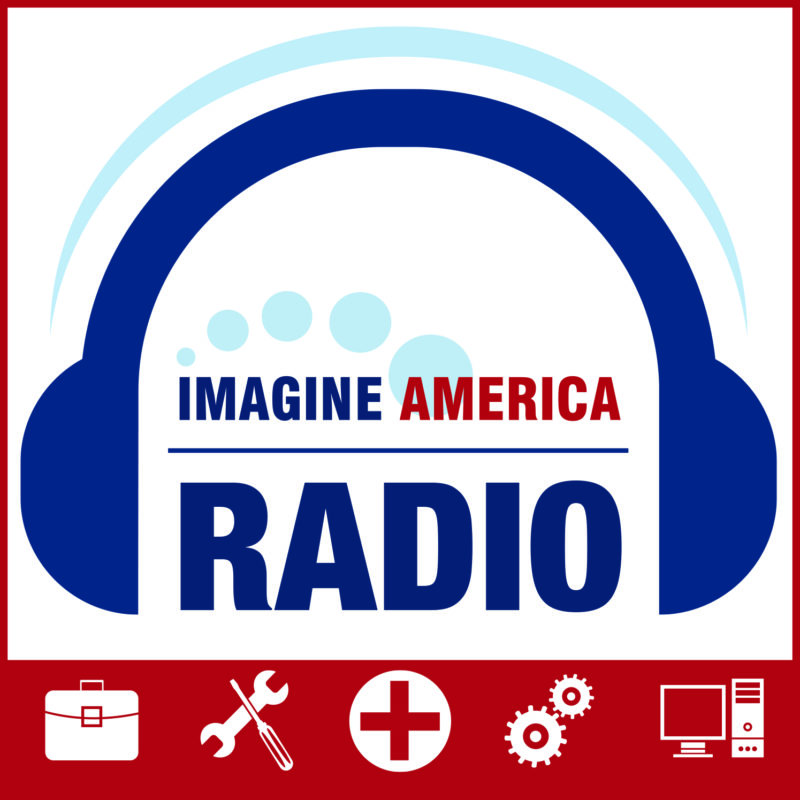
Imagine America FOUNDATION
The Imagine America Foundation has been supporting students and the career college sector for over 20 years!
More FROM PORTER & CHESTER INSTITUTE
Read the Transcript Here
Lee Doubleday: Hello and welcome to our third episode of our nursing career series on Imagine America Radio, where we specifically focus on nursing careers. Joining us today is Jim Bologa, president and CEO of Porter and Chester Institute and YTI Career Institute. Porter and Chester has nine campuses throughout Connecticut and Massachusetts, while YTI Career Institute has campuses in Altoona, Lancaster, and York, Pennsylvania. These campuses have been educating tomorrow’s workforce since 1946 and are accredited by the [Accrediting Commission] of Career Schools and Colleges. Porter and Chester trains its students to enter the workforce in the transportation industry, featuring Porter and Chester’s automotive technology program; the health care industry, featuring Porter and Chester’s medical assisting, dental assisting, medical billing and coding, practical nursing, respiratory therapy, veterinary technician, health information management, expanded function, dental assistant program, and cosmetology program; as well as the skilled trades sector featuring Porter and Chester’s HVAC and refrigeration, plumbing, electronics, and electrician programs; and the technology sector featuring Porter and Chester’s computer networking technician and computer-aided drafting and design, along with computer data management, as well as business operations programs. |
Bob Martin: Hey Jim, we really appreciate you joining us today. |
Jim Bologa: Thanks for having me. I appreciate the opportunity. |
Bob: Hey Jim, today we want to talk about practical nursing. Can we start off with you explaining for our audience what practical nursing is and maybe how it might differentiate a little bit from a registered nurse? |
Jim: Yeah. I mean, I think probably the easiest way to talk about—maybe starting with registered nursing first—is that I think one of the main things that a registered nurse will do—that a practical nurse won’t do—is they generally tend to carry out more assessments and make more decisions before really seeking the support of a supervisor, whether it’s a higher nursing professional and/or a doctor. And a licensed practical nurse generally will report to a registered nurse. Most practical nurses in the country are generally going to be working in a long-term care facility, also known as a nursing home. There are the use of licensed practical nurses in hospital settings, but that’s really a state-by-state situation. So, depending on the state that you might live in, that state would dictate how a licensed practical nurse might work in a health care setting. |
Lee: All right. Now that we have a better idea of what the difference between a practical nurse and a registered nurse, can you tell us a little bit about what a practical nursing program entails? The education side of how practical nursing—just describe a little bit about what the education for that looks like and maybe how that compares to RN? |
Jim: Yeah. I mean, we could probably go into the duties as well, maybe in the next question, but generally speaking, a practical nursing program is—again, the educational requirements are determined state-by-state basis. And most states are generally going to be somewhere between, on the low, end 1,000 hours of education up to as much as maybe 1,500 hours of education. And generally, that’s split up between didactic—or think about it, lecture activities and other lab activities—and then the remaining half being direct patient care hours, where you’ll actually go into a live clinical environment and work under an RN or above, and actually interact with the patients. Most practical nursing programs are generally going to be able to be completed in anywhere between, I would say, 10 months to 12 months on the low end—probably up to 15 to 18 months on the high end. And that student will end up with a postsecondary diploma, or some folks might call it a certificate, versus an RN—most RN programs are generally, today, BSN programs, meaning that you would spend four years in school. There are still, in some states, the ability to get a two-year RN program, but many of those opportunities are slowly winnowing away. So that’s really the difference. I mean, the difference really being a practical nursing program, something that your listeners should think about getting done in sort of a year to year and a half time, versus an RN having to—more likely than not—spend two to four years getting that credential. |
Bob: So, Jim, you’ve gone through, you’ve identified the school, you’ve gone through the program, you’ve done your 10 to 12, or maybe 15 months on the high end. Tell me what they’re going to do. What are they going to do when they walk out of Porter Chester or YTI? Where are they going to go and what are they going to be doing? |
Jim: Yeah. In many states, practical nurses have to then sit for—once they complete their education, they’ve got to then sit for the NCLEX exam. So that’s the national licensure exam so that they can then actually practice in a health care setting. And like I said before, most of these practical nurses will end up in a long-term care facility caring for elderly individuals, and they will generally work under the direction and supervision of an RN. And so typical LPN duties—and I’ll just I’ll sort of just rattle off a number of things that an LPN would do and—so. And this list is in no particular order, but they’ll administer oral, rectal, topical medications. In some states, they can actually administer IV medications. They monitor IV sites. They perform physical assessments. They document those assessments in medical records. They’ll take vital signs and measure vital signs. They’ll be involved in transferring patients in and out of bed. They’ll help with the feeding and dressing and helping perform hygiene with the patients. They’ll be involved in changing of any wound dressings. Again, they’ll be involved in the collection of any type of specimen, whether it’s blood, or stool, or urine. And in some areas, they might get involved with catheters. So again, be involved potentially with kidney dialysis—and that’s, again, state-dependent. They may be involved with assisting patients with ventilators and tracheostomy tubes. And then really monitoring patients on a daily basis, as well as long-term documenting those results. Again, recognizing any changes in patients’ behaviors and bringing in higher-up medical professionals all the way up to a physician. Again, they’ll be called on to perform emergency CPR if that is needed. They’ll work hand in hand with a registered nurse in terms of executing the nursing plans that are generally put together by the RNs. And they will also assist in managing the staff in a nursing home facility. So those generally tend to be the duties. And, so, they’re heavily involved in the daily activities of a patient, in terms of helping them go through those normal activities. And so that’s really the main goal for a practical nurse or a licensed practical nurse. And, in some cases, they will be involved in also passing medication. And so, again, they’re really the front line—I would say the front-line support or advocate for that patient and making that connection to that registered nurse or that RN who they’ll be reporting to. |
Lee: Gotcha. All right, Jim. Now on this podcast, we talk a lot about the demand for nurses, and I don’t think it’s any secret that we’re in high demand for nurses right now in this country. But would you say that now may be a good time to get into nursing because of the demand? And what would you say to someone who is a little unsure if this career would be a good fit for them? Or, in other words, they’ve always thought about being a nurse. They’ve always wanted to help people but just aren’t quite sure if now is the best time. How would you go about assessing if this is the right career fit for you? |
Jim: Yeah, I mean, I think nurses are really, I think, special people. They’ve been on the front line for the last 18, 20 months during COVID—and COVID continues. So again, I think that what we see in our practical nurses is that they’re folks who aren’t afraid of a challenge. You know, they’re generally the first ones to sort of rush in and help folks out. And again, I think, for our successful nurses, I think they truly care. They truly care about patients and people and wanting to help them. And I think that a lot of nurses have gone—during the pandemic—have gone above and beyond the call of duty. And so, as it relates to opportunities right now for nursing students, I would tell you that there is no better time than right now to go into the profession. |
The profession itself is really in a place where they desperately need new nursing talent coming into the workforce. Because again, I think that we all have to recognize that during the course of COVID, there have been nurses who passed from COVID. There have been nurses who have retired because of having pre-existing conditions that preclude them from working in a COVID environment. And I think that there are nurses as well that I think just are physically and mentally burned out because of the demands of COVID. Prior to COVID, there was a nursing shortage in the country. COVID, I think, just exacerbated it. So, I think that at this point, it’s a great time. Getting through your education is not an easy process—I mean, a practical nursing program is very involved. And I would say that then sitting for the NCLEX test is obviously required. But I would say on the other side, there is a tremendous opportunity for a practical nursing student to become a licensed practical nurse and to be gainfully employed upon passing their NCLEX exam. So, it’s a tremendous time, I think, to go into the profession. And I would say that there’s been a lot of innovation that’s taken place in health care right now as well. Again, I think it’s a super time to pursue nursing. |
Lee: Yeah, I’m sure. I’m glad that we have schools like yours, like Porter and Chester and YTI, that can quickly turn around students and educate them to be able to enter the workforce in a time like this where we need as many people as possible, all hands on deck. So really appreciate what you guys are doing and just commend Porter and Chester for everything that you do. Now let’s assume that I’m listening to this episode of this podcast and talking about schools, what should I be looking for in a practical nursing program? Should I look for a school that offers accreditation? Is the relationship with employers something that I should be looking at? What are some things—class flexibility, maybe—that I should be looking at? What are some things that I should be looking at as a student considering going into this program? |
Jim: Yeah, I mean, I would say one of the things that I think makes us unique is, again, in the state of Connecticut where we offer our practical nursing program, the requirement is at least 1,500 hundred hours. And again, I think for any school, I think accreditation is important. We’re nationally accredited. That affords students the opportunity to participate—it affords us the opportunity to participate in the federal student aid program. Obviously, financial aid is available to those who qualify. So that’s one of the first steps is, in making sure you can afford to go to school. And what I would say is look for programs that are relatively short in length, and I would say also look for programs that have some flexibility. So, if the program is a hybrid program, I think, that itself, provides some time-of-day flexibility for folks. But again, I mean, if the program is 100% residential, I mean, you have to build your life around your education. |
So, I would simply encourage folks that—the program itself is difficult in terms of the time commitment and the amount of work that you have to do. So, students really have to get their lives in order and get their families on board and their other support systems on board. And we generally encourage students that, if they’re working full time, that they probably ought to cut back because the program is going to require an extensive amount of work, homework, study time, and preparation. And then again, I think that for most students today, I think there is a tremendous need on the employment side. So again, having a conversation—whether it’s through text or email or a phone call with the school—to make sure that you understand where some of the graduates are going to work would be helpful, or if there’s a place that you have some interest in working at, just inquiring at the school to see if they have a relationship there. And if they don’t, many of the schools are pretty progressive in the sense that they’ll reach out to that employer and develop a relationship for that student, or as a student progresses through time—possibly have a virtual career fair or some other event where that interaction can occur. |
Bob: Jim, this is Bob. There’s so much—and there’s so many things in what you talked about. But I want to go back to this one thing, just to make sure that I’m summarizing properly. The kind of person that is good for this particular type of program, as I heard you say, I think—I don’t want to put words in your mouth—pretty smart or at least has the ability to analyze, pretty good communication skills, meaning that they can talk to other people—whether it’s physicians or other clinicians or whatever, talk to patients. Because many times aren’t your people the kind of the translator for the patient? In other words, what did this doctor just say to me, and what’s going to happen now? They’ve got to be very energetic, meaning that you’ve got so many things going on. You’re running around these floors doing all kinds of stuff. And then I hear a caring, compassionate person—and we hear that over and over and over is that I’m going into it because I want to help people. I want to be were almost kinds of people. I want to have those kinds of challenges. Would those three or four things that you would be comfortable with? |
Jim: Yeah. No. Absolutely. I think folks go into health care because they want to help people. They care about people. They’re empathetic. And so, I think that that’s an intrinsic quality of that individual. And I would say that, again, these programs generally are a bit more academically rigorous. So, I would simply suggest that you’ve got to have some interest in science and in the body and all the body systems. And so, you’ve got to have some interest there as well. And then, lastly, I think a lot of these folks are also very courageous in the sense that they’re the ones who are instinctively getting involved when someone get hurt, so. And again, I think the communication piece is something every person needs to work on, so. And I think that practical nurse is really monitoring the daily living activities of the patient and obviously communicating them to the appropriate health care professional that is above them, whether it’s an RN or physician. So yeah, I think you hit the nail on the head. I think that those are the things that I would sort of suggest, as listeners are sort of hearing this podcast and as they’re sort of reflecting themselves, “Is this sort of what I’m made of and I would be interested in?” And I would say that, again, it’s a profession that has been around a long time and I think that’s a profession that’s really, really needed. And I think it’s—again, I think in every state in the country, if you look at just the population and the aging demographics of the country, the requirements for practical nurses is just going to continue to be very robust. So, I think that from an employment point of view, there are some folks who are going to be very happy being a licensed practical nurse throughout their career. We do see other students who—they use it as a steppingstone. And they start out as an LPN, and they might decide to go become an RN down the road. But again, I think they can really hone their basic nursing skills starting in a practical nursing program and then going into the field itself and really taking the time to get, I think, high-quality basic nursing skills. |
Bob: Hey Jim, would it be fair to say it’s a really good opportunity for this particular type of person to kind of stick their toe in the water, get a chance to get exposed to it, and if they like it, and if they’re acclimated to it and it works—then you’ve got a really nice stepping stone to something else in your career. That’s going to get you opportunities that we haven’t even talked about that—Bureau of Labor Statistics, every region of the country demands these sorts of people. I mean they’re all over. But I think the important thing of Porter and Chester and YTI, in my opinion, is also a student to be looking at really good regional or national reputation. Are the kids coming in—are they getting prepared? And are they moving off into meaningful employment because at the end of the day—mom and dad or their significant other—it’s all about ROI, right? It’s all about, “How long is it going to take me? What am I going to get and what can I expect?” And the second thing—why is this accreditation thing really, really important? It’s important because it drives your ability, of the student, to be able to qualify for any federal financial aid that may need to go through. And then flexible programs and start—that’s absolutely critical nowadays with COVID. Very few people want to go and sit in classes all day, right? They want to get—“Give me that stuff now and I’ll come in and I’ll talk to your people. But let’s do it in a little bit different—” And then the employer relationships. “Where am I going to go?” When mom and dad sit there and they say, “Okay, I get it. Betsy is going to through this or Lee’s going to go through this work and he’s going to end up—he’s going to get a really good opportunity to work in a doctor’s office, in a clinical situation, nursing home situation, or a hospital.” Right? Jobs are there. Is that fair? |
Jim: Yeah. Yeah. No. Absolutely. I think you’ve summarized it. |
Lee: Great. |
Bob: Well, you want to give us the 30-second www and where do you want the people to go if they’re interested in Porter and Chester and YTI? |
Jim: Yeah. So, for those folks who are listening on the podcast who do have some interest in pursuing practical nursing or any of our other programs, I would encourage them to go to www.porterchester.edu or they can check out www.yti.edu as well. |
Bob: Great. This has been a great session. Jim, it’s always great having you on as a guest. We really enjoy our partnership with Porter and Chester and YTI. This has been a great episode on Imagine America Radio and hope that you’ll take the opportunity to contact Jim—Porter and Chester—if you’re in that area and you’re interested. Thank you all and have a great day. |
More Episodes
subscribe where you listen
COPYRIGHT IMAGINE AMERICA PUBLISHING 2021 ALL RIGHTS RESERVED PRIVACY POLICY
